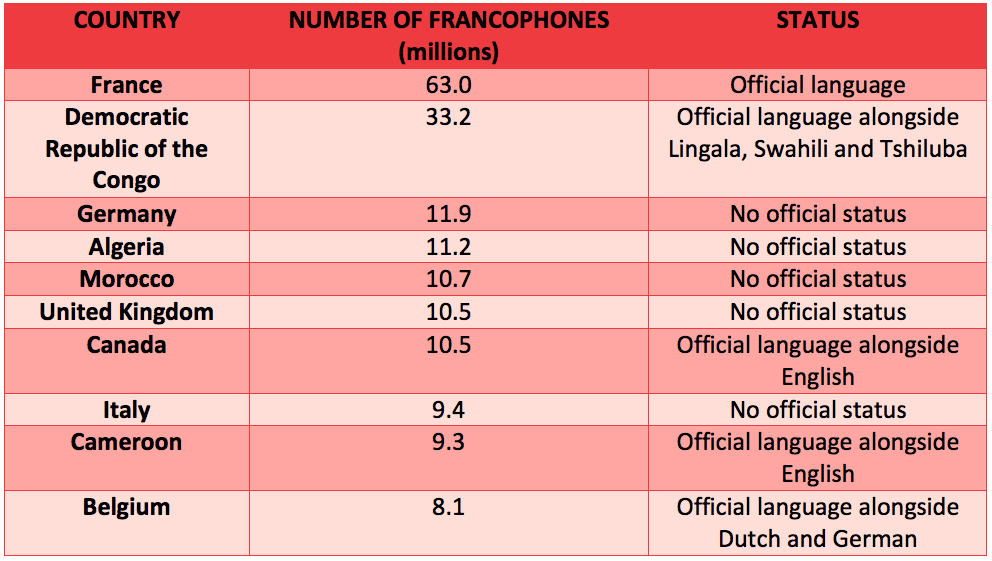With an estimated 270 million speakers across 55 countries, it is clear that Francophones (French speaking people and nations) have an extensive influence worldwide. An estimated 100 million people are native French speakers and a further 180 million secondary. These values however are constantly fluctuating; the OIF (the International Organisation of La Francophonie) predict that by 2050, an immense 700 million people will be fluent in French. Subsequently, it is no wonder that the language continues to play a crucial role in international relations. In fact, Bloomberg Businessweek ranked French as the third most useful language in business after English and Mandarin.
HISTORY
 Like many other Indo-European languages, French evolved from the vulgar Latin used during the Roman Empire. Before the Romans invaded France, the country was primarily populated by Celtics known as Gauls. Their language failed to endure however, facilitating the domination of Latin. The first recorded document in French is the ‘Serments de Strasbourg’, written as early as 842 AD.
Like many other Indo-European languages, French evolved from the vulgar Latin used during the Roman Empire. Before the Romans invaded France, the country was primarily populated by Celtics known as Gauls. Their language failed to endure however, facilitating the domination of Latin. The first recorded document in French is the ‘Serments de Strasbourg’, written as early as 842 AD.
Although French existed, it was not until the 16th century that it became the official language of France. This was largely due to the actions of King Francis I who replaced Latin with French as the primary language of diplomacy. It reigned supreme until the mid 20th century when World War II ended and the USA became a superpower. Despite this, French is still an official language of numerous international organisations such as the United Nations, the European Union, NATO, the WTO and the International Olympic Committee.
INTERNATIONAL DISTRIBUTION
Despite a deceleration in growth over the last century, French is still spoken all over the world. It is an official, co-official or de-facto national language in 29 countries. The largest population of Francophones reside in France, followed by the Democratic Republic of the Congo, Germany, Algeria and then Morocco (see below).

The distribution of French worldwide is determined by many political, economic and cultural factors such as the colonization of Canada, the Caribbean and many African regions. These factors have positioned French as the second most studied foreign language with nearly 120,000 students and 500,000 teachers. In the USA and other Western countries, the study of French is superseded only by Spanish.
NATIONAL DISTRIBUTION

The French language varies due to location both on a national
and international scale. In France alone for example, French has various distinct forms. Traditional French is associated with Northern France, in particular Paris, whereas rural areas in the South of France are more familiar with Occitanian French (langues d’oc). These variations of French, known as ‘patois‘, were also formed during the Roman Empire and include Provençal, Occitan and Catalan.
In more recent centuries, they had been neglected by the central government in efforts to preserve the “correct French” of the North (langues d’oil). In fact, the French Academy, the official guardians of the French language, often refuse to incorporate new variations in the language. It was not until the 1970s that organisations and communities made significant attempts to revive the languages, attracting media attention and widespread support. This evoked a more acceptant attitude towards the patois, allowing them to flourish. Now they can be found on street signs, in major publications and even the French constitution.
French has an extensive international influence, particularly in the globalised corporate world. As a translation, interpretation and localisation company, Creative Word recognise this and offer a range of services including French translation, transcription and interpretation. For more information on French translation, please contact us today.

Recent Comments